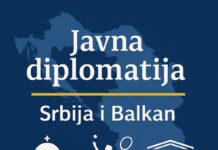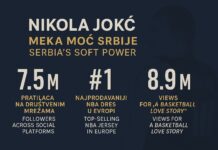
She was still using same cell phone with text dominating system but color phone which was gifted, second handed, six years ago by his son when he got new one. She showed me the phone and said it was the same phone when we met six years ago. She was using phone only to receive phone calls however she has started dialing from immediate, six years ago, I shared to operate properly. I told my number and she dialed again. Incoming call displaying name of “Dil Kumari Chhetry” on my phone was evidence of media richness using smart technology, for example – smart phone, cloud and the Internet – that I am using. However, she had also my number but it was saved as different name which is unknown to her since she can’t still recognize English script. This is a story of woman – Dil Kumary Chhetry – from Ghandruk which is one of accessible remote areas of Nepal and in line of Annapurna trail circuit. I revisited her in her house with my family in March 2017. I met her six years ago in December 2011 when I was in academic research of e-Government project work for Kathmandu University.
Our trail to Ghandruk was leveraged by new assignment for me. The new assignment was about to revisit those house hold or persons to whom I had met then. In addition, we visited new one who has also same story of Dill Kumari Chhetry and she is more forward of using mobile. We had a good conversation with her and her sister-in-law and son and came to know that nobody use any smart applications connecting with the Internet.
The Internet and social media like Facebook have become very popular within six years – I came to know this statistics when I entered into conversation with a guy of class eleven from the same school of Ghandruk where I had conducted a survey last time in 2011. I found very few youths in Ghandruk who knew the Internet or Facebook then, however now most of the youth knew the Internet and Facebook too. Obviously, content of the Internet or maturity of taglines in Facebook might be different than your perception level.
These three actors are few examples of representation of people of Ghandruk where the Internet is nowadays available but not easily however famous in Ghandruk.
People in town and in city area have a story of digital migration and media richness with technology. People here have travelled from ordinary technology to smart technology, for example Nokia 1100 – black and while text phone – to smart phone with the Internet, cloud and dynamic mobile apps. This migration also increases e-readiness of people in city.
E-readiness is state of ability – in terms of technological infrastructure from government or public or private sector, economic, education, culture, attitude & behavior and health – to use technology. Now, it is easy to graph e-readiness of individuals from different geographic locations and obviously e-readiness of rural area is less than people in city since people in rural area lack opportunity of infrastructure and economic activities compared to people in city area. There is a method to measure e-readiness and an Office of UN Economic and Social Affair does this study around the world. We could replicate the same method to measure e-readiness of our area. This study is very important to those people who believe effectiveness and want to increase effectiveness of digital marketing, digital promotion or digital diplomacy; they are doing, especially in public services.
Digital marketing of private sector and digital promotion in city area are effective however digital diplomacy, especially in rural area like Ghandruk, of government and public organization might have less mediation power than in city area according to e-readiness of those areas as stories above portrayed in regard of e-readiness. But, it is now time to figure out understanding in statistic rather than stories.
Mobile diplomacy, especially using social media, reaches 51.66 per cent of total population and the share of the Internet penetration in rural area is very less than in city. Total Internet penetration through different means – like landline, cable, fiber and mobile – is 54.34 per cent. However, mobile users in both areas – rural and city – are more than population – 119.98 per cent and all mobile users do not use the Internet. Mobile diplomacy is also catered by content, interest and types of social media. There are more Facebook users than other social Medias – Twitter, LinkedIn in Nepal according to content and interest. Most of Facebook users are “LIKED” driven than knowledge building or being informed. There are 6,400,000 users of Facebook in Nepal according to the Internet world stats Jun 2016.
Coming back to the story of Dil Kumary Chhetry from Ghandruk, rural area of Nepal, she does have cell phone without the Internet. Though she has the Internet, she cannot access the content of social media posted by diplomats and agencies when those content are not localized. There are a set of element to gear up digital diplomacy in rural area. Most of digital actors – especially diplomats, development actors, academicians and researcher – are posting their ideas and knowledge only to reach those people who are spending their life in city and still there is a question who is the actual audiences for their core message. Just twitting and posting in Facebook do not end their responsibility of informed and do not make sense of reaching those needy people to whom it is really needful to make their life comfortable with knowledge from such agencies and actors. But, digital diplomacy in city – which has significant mediation power – is equally important.
People in rural or in city – who are using those primitive technology like text only – could also be reached using text technology (SMS) but it is more expensive than digital media. Digital actors may not feel comfortable using those primitive technologies too. However, this technology is really good enough to reach to rural people like Dil Kumary Chhetry.
In a way, digital gap is increasing between rural and city. Major actors like government and development also equally contribute to increase e-readiness implementing ICT master plan over the country. United Nations Secretary-General Antonio Guterres has also stressed upon continuing to reform UN’s communications strategy, consolidating a “digital first” approach, making the best use of technological progress.
| NTA MIS Summary Report of December 2016 | |
| Description | Data |
| Population of Nepal | 26,494,504 |
| Total Telecom Users | 33,490,890 |
| Mobile Users | 31,787,824 |
| Total Internet Penetration | 14,398,201 |
| Mobile Internet Penetration | 13,687,833 |
| Total Telecom Users (%) | 126.41 |
| Mobile Users (%) | 119.98 |
| Internet Penetration (%) | 54.34 |
| Mobile Internet Penetration (%) | 51.66 |
| Source: NTA MIS Report December 2016 | |

https://rajendrabanepali.wordpress.com/2017/04/30/social-media-richness-in-digital-diplomacy-in-nepal/













